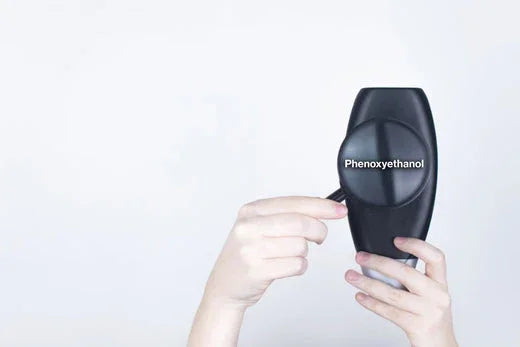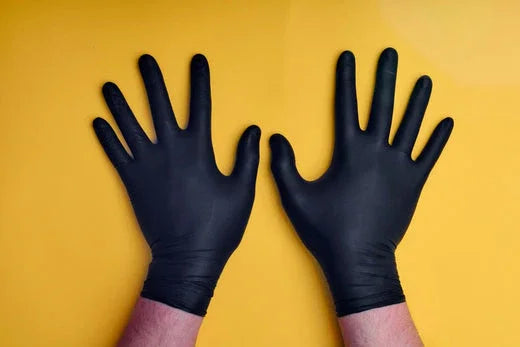7 Types of Psoriasis
With its different symptoms and manifestations, knowing what kind of psoriasis you have can help you create a treatment plan to live better. Here's a brief rundown of the 7 main types of psoriasis.
Psoriasis is a non-contagious skin disorder which results in red, scaly patches on the skin. While these patches can appear anywhere in the body, they are usually seen on the elbows, knees, lower back, and scalp.
A long-lasting, inflammatory skin condition, psoriasis creates unneeded skin cells as a result of an overactive immune system. The condition, however, is often misunderstood as it generates scaly patches on the skin that can bleed, itch, and emit pus-filled blisters when aggravated.
While the symptoms that psoriasis seem indistinguishable as common patches and rashes erupt over the body, it's important to know that knowing which types of psoriasis you have can help in managing the symptoms.
1. Plaque Psoriasis

Recognized by WebMD as the most common type of psoriasis, plaque psoriasis is characterized by "raised red patches covered with a whitish buildup of dead skin cells called scale."
"They usually show up on your elbows, knees, scalp, and lower back, but you can have them anywhere," the health website reported, stating that plaques, also known as "psoriasis vulgaris," commonly affect 8 out of 10 people with psoriasis.
2. Guttate Psoriasis

Diagnosed mostly in children and young adults, guttate psoriasis looks like small, pink-red spots on the body that often appear on the trunk, upper arms, thighs, and scalp.
According to the Cleveland Clinic, the symptoms of guttate psoriasis commonly include irritated skin and round, red patches of skin that range between 2 and 10 millimeters in width.
3. Inverse Psoriasis

Photo from National Psoriasis Foundation
When the skin rubs against itself, irritation occurs. Inverse psoriasis is an immune-mediated skin condition that causes rashes and bright red patches in folds and creases. They are usually found in the armpits, groin, under the breasts, and skin folds around the genitals and buttocks.
According to the Cleveland Clinic, the symptoms of inverse psoriasis typically include:
- Bumps in the affected area that contain pus
- Foul smell
- Small cuts or tiny cracks in your skin
- Swelling
- Tenderness
These manifestations can be triggered by friction, sweating, fungal infections, skin injuries, emotional stress, certain prescription medications, and streptococcal infections.
4. Pustular Psoriasis

Although uncommon, pustular psoriasis is a serious skin condition characterized by pus-filled bumps, spots, and red skin. As reported by WebMD, this type of psoriasis may "show up in one area of your body, such as the hands and feet."
"This kind of psoriasis is uncommon and mostly appears in adults... Sometimes it covers most of your body, which is called 'generalized pustular psoriasis.' When this happens, it can be very serious, so get medical attention right away," said the health website.
Symptoms include:
- Fever
- Chills
- Nausea
- Fast heart rate
- Muscle weakness
These symptoms are usually triggered by topical medicines, systemic medicine, suddenly stopping systemic treatment, strong topical steroids, getting too much ultraviolet (UV), light without using sunscreen, pregnancy, infection, stress, and exposure to certain chemicals, among others.
5. Nail Psoriasis

Defined by the Cleveland Clinic as an autoimmune skin condition that causes "discoloration, pitting, and changes in the structure of your nails." This type of psoriasis is more common in people who have psoriatic arthritis, which affects your joints.
How is it diagnosed? Healthcare providers typically diagnose nail psoriasis with the help of the Nail Psoriasis Severity Index (NAPSI) to grade the severity, which uses imaginary lines to divide affected nails into four even sections.
“Your nails receive a 0-4 score based on the presence of any nail psoriasis symptoms in each of the quadrants [then total them]... A low number means your nail psoriasis is mild, and a high number means your nail psoriasis is more severe," said the health website.
Symptoms of nail psoriasis include:
- Pitting of your nails
- Tender, painful nails
- Separation of the nail from the bed
- Color changes (yellow-brown)
- Chalk-like material under your nails
6. Psoriatic Arthritis

Psoriatic arthritis is a lifelong skin and nail condition that causes red, scaly rashes and thick, pitted fingernails. According to John Hopkins Medicine, psoriatic arthritis comes in five forms:
- Arthritis that affects the small joints in the fingers, toes, or both
- Asymmetrical arthritis of the joints in the hands and feet
- Symmetrical polyarthritis, which is similar to RA
- Arthritis mutilans, a rare type of arthritis that destroys and deforms joints
- Psoriatic spondylitis, arthritis of the lower back (sacroiliac sac) and the spine
7. Erythrodermic Psoriasis

Photo from Mayo Clinic
Determined by WebMD as the "least common yet very serious" type of psoriasis, erythrodermic psoriasis affects the body, causing widespread, fiery skin that appears to be burned. “This type of psoriasis can cause severe illness from protein and fluid loss. You may also get an infection, pneumonia, or congestive heart failure."
Oftentimes, severe itching, burning, peeling, faster heart rate, or changes in body temperature are the common symptoms. If you or someone you know has these symptoms, see your doctor right away for proper treatment.
Triggers include:
- Suddenly stopping your systemic psoriasis treatment
- An allergic drug reaction
- Severe sunburn
- Infection
- Medications such as lithium, antimalarial drugs, cortisone, or strong coal tar products
For more valuable information regarding psoriasis, visit the National Psoriasis Foundation. You may also read our related blog: 5 Ways to Celebrate National Psoriasis Awareness Month this August.
DISCLAIMER: The information presented on Cottonique is not, and will never be, intended to be a substitute for professional medical advice, diagnosis, or treatment. All content materials found on this site, from text, treatments, outcomes, charts, graphics, photographs, and study findings, are created and published for general informational purposes only. It should not, in any way, be construed as a standard of care to be followed by a user of the website.
Thus, readers are encouraged to verify any information obtained from this website with other accurate references and review all information regarding any medical condition or treatment with their physician. As Cottonique strives to help those with allergies live with better days, the hypoallergenic apparel brand encourages everyone to always seek the advice of their physician or other qualified health providers with any questions they may have regarding a medical condition.








